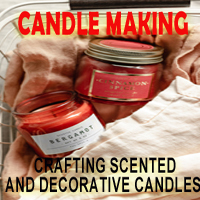


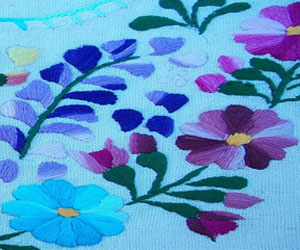
Fabric creativity is an art form that seamlessly weaves together the threads of imagination, skill, and a love for textiles. From fashion design to home decor, from traditional handicrafts to avant-garde installations, fabric creativity is a vast and diverse realm that allows individuals to express their artistic visions in countless ways.
The Art Of Fabric Creativity: At its core, fabric creativity is about transforming plain fabrics into extraordinary works of art. It begins with a choice of fabric, a canvas upon which artists can explore their creativity. Whether it's the softness of silk, the durability of denim, or the rustic charm of burlap, each fabric offers unique possibilities. Artists can play with colors, textures, and patterns, adding layers of dimension to their creations.
Fashion And Fabric Creativity: One of the most prominent domains of fabric creativity is fashion design. Renowned designers around the world push the boundaries of fabric manipulation to create stunning garments. From haute couture gowns that seem to defy gravity to everyday wear with innovative designs, the fashion industry thrives on fabric creativity. It's not just about sewing but also about sculpting, draping, and embellishing to breathe life into fabrics.
The World Of Textile Art: Beyond the realm of fashion, textile art is a profound expression of fabric creativity. Artists use various techniques like embroidery, quilting, and weaving to craft stunning pieces that blend traditional and contemporary elements. Each piece tells a story, often reflecting the artist's emotions, experiences, and cultural influences.
Fabric Creativity In Home Decor: Home decor is another arena where fabric creativity shines. Whether it's hand-stitched cushions, beautifully quilted throws, or intricate wall hangings, textiles have the power to transform a living space. Fabric creativity allows individuals to customize their homes, infusing them with personal style and warmth.
Eco-Friendly Fabric Creativity: In recent years, fabric creativity has also embraced eco-friendliness. Artists and designers are increasingly using sustainable and upcycled materials to create unique pieces. This eco-conscious approach not only reduces environmental impact but also adds depth to the narrative behind each creation.
The Intersection Of Technology And Fabric Creativity: Modern fabric creativity is not limited to traditional techniques. Technology has entered the arena, with 3D printing, digital textile design, and even smart fabrics becoming part of the creative palette. These innovations allow artists to experiment with entirely new forms, structures, and functions.
Avenues For Personal Expression: For many, fabric creativity serves as a therapeutic outlet, a way to destress and find joy in the act of creation. Whether you're an experienced seamstress, a novice embroiderer, or someone experimenting with fabric for the first time, it offers a platform for self-expression and a tangible outcome of your imagination.
Fabric creativity is a world where art and utility beautifully intersect. It's a testament to the enduring appeal of textiles and the human instinct to create. Whether through fashion, textile art, home decor, or innovative technologies, fabric creativity continues to inspire and captivate, providing an ever-expanding canvas for artists and enthusiasts to explore their imagination and craft something truly unique and extraordinary. So, if you're looking for a way to infuse your life with a bit of creativity, perhaps it's time to pick up some fabric and start stitching your own masterpiece.
Crafting Beauty And Functionality
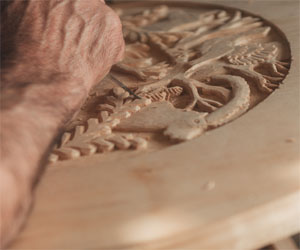 From Functional To Decorative: Creating with wood spans a broad spectrum, from crafting functional items such as furniture, cabinetry, and household objects, to carving intricate sculptures and decorative art pieces. This diversity allows artists to express their creativity across a wide range of styles and purposes.
From Functional To Decorative: Creating with wood spans a broad spectrum, from crafting functional items such as furniture, cabinetry, and household objects, to carving intricate sculptures and decorative art pieces. This diversity allows artists to express their creativity across a wide range of styles and purposes.
Traditional Techniques And Modern Innovations: The art of creating with wood combines traditional techniques handed down through generations with contemporary innovations. Woodworkers may employ age-old joinery methods like dovetails and mortise and tenon, while also using modern power tools for efficiency. This harmonious blend of old and new techniques gives rise to a rich tapestry of creations.
The Joy Of Craftsmanship: Woodworking, in particular, is a craft that places great emphasis on craftsmanship. It demands precision, attention to detail, and an unwavering commitment to quality. Whether it's shaping a piece of wood with hand tools or operating sophisticated machinery, the satisfaction of creating something with one's own hands is immeasurable.
Functional Beauty: One of the most remarkable aspects of creating with wood is the fusion of beauty and functionality. Woodworking, for instance, produces items that serve practical purposes while also being aesthetically pleasing. Chairs are designed for comfort, tables for stability, and cabinets for storage, but each is also a piece of art that enhances living spaces.
Sculpting Emotions: Artistic creations with wood go beyond the functional. Wood carvers, for instance, transform raw timber into intricate sculptures that convey a wide range of emotions. From serene and serene figures to dynamic, abstract forms, wood allows artists to sculpt their feelings and experiences into tangible art.



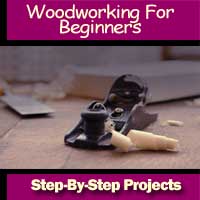

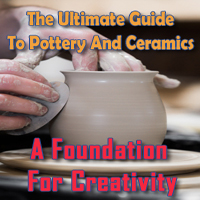
Nurturing Mind And Body
 Crafting also enhances cognitive abilities. It stimulates your brain and challenges it in new and exciting ways. Whether you're following a knitting pattern or solving a design problem in woodworking, crafting requires problem-solving skills, spatial awareness, and attention to detail. Over time, these mental exercises can help sharpen your mind and keep it agile.
Crafting also enhances cognitive abilities. It stimulates your brain and challenges it in new and exciting ways. Whether you're following a knitting pattern or solving a design problem in woodworking, crafting requires problem-solving skills, spatial awareness, and attention to detail. Over time, these mental exercises can help sharpen your mind and keep it agile.
Furthermore, crafting encourages mindfulness. When you're deeply immersed in a creative project, you enter a state of flow, where you lose track of time and are completely absorbed in the task. This meditative quality of crafting can be profoundly calming and is akin to the practice of mindfulness meditation, which has been proven to reduce anxiety and improve mental health.
The sense of accomplishment that comes with completing a craft project can boost self-esteem and self-worth. Seeing your creations come to life can be incredibly rewarding, instilling a sense of pride and purpose. Crafting can also provide a platform for social interaction, as it is often enjoyed in groups or shared with friends and family. This sense of connection can combat loneliness and foster a sense of community, which is vital for overall well-being.
Crafting offers a physical dimension to wellness as well. Many crafts require fine motor skills, hand-eye coordination, and dexterity. For example, activities like knitting, pottery, or jewelry making engage your hands and fingers, helping to maintain their flexibility and strength.
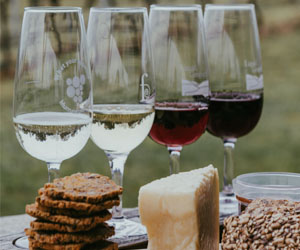 Taste And Smell: The sense of taste and smell are closely intertwined, working together to create the flavors we savor in our favorite foods and beverages. These senses have the power to evoke powerful memories and emotions. The aroma of a homemade apple pie might transport you back to your grandmother's kitchen, while the taste of a particular wine could remind you of a special celebration.
Taste And Smell: The sense of taste and smell are closely intertwined, working together to create the flavors we savor in our favorite foods and beverages. These senses have the power to evoke powerful memories and emotions. The aroma of a homemade apple pie might transport you back to your grandmother's kitchen, while the taste of a particular wine could remind you of a special celebration.
Touch: Our sense of touch allows us to experience a wide range of sensations, from the warmth of sunlight on our skin to the comforting embrace of a loved one's hug. This sense plays a fundamental role in our connections with the world and the people in it.
Sight: Sight is often considered the dominant sense, and it's not hard to see why. The world is a visual symphony of colors, shapes, and patterns. Our sight helps us navigate the world, appreciate art and beauty, and communicate with one another through facial expressions and body language.
Hearing: The sense of hearing is a gateway to the auditory world, from the laughter of friends to the soothing sounds of nature. Music, in particular, has the power to evoke profound emotions and transport us to different times and places.
Emotional Impact: Sensory experiences have a profound emotional impact on our lives. They can make us feel joy, nostalgia, awe, or even a sense of tranquility. A simple scent or a familiar tune can trigger memories and emotions, creating a bridge between the past and the present.
The Fascinating World Of Ancient Brewing
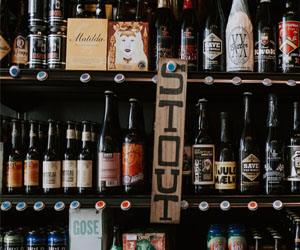 Brewing As A Cultural Ritual: In ancient societies, brewing held a special place in both religious and social contexts. Beer was often associated with various deities and played a vital role in religious rituals. In Egypt, for instance, beer was a part of offerings to the gods, while in Sumeria, it was seen as a gift from the goddess Ninkasi, who was not only the goddess of beer but also a symbol of the Sumerian way of life.
Brewing As A Cultural Ritual: In ancient societies, brewing held a special place in both religious and social contexts. Beer was often associated with various deities and played a vital role in religious rituals. In Egypt, for instance, beer was a part of offerings to the gods, while in Sumeria, it was seen as a gift from the goddess Ninkasi, who was not only the goddess of beer but also a symbol of the Sumerian way of life.
The Influence Of Ancient Brewing: The techniques developed by ancient civilizations have had a profound influence on brewing throughout history. The knowledge of fermenting grains, along with the discovery of hops in medieval Europe, led to the development of beer as we know it today. Ancient brewing traditions continue to inspire modern craft brewers who look to revive old recipes and ingredients to create unique and historically accurate brews.
Brewing In the Modern Age: Despite the vast differences between ancient brewing techniques and modern practices, there are some striking similarities. Both ancient and contemporary brewers share a fundamental understanding of the transformative power of yeast.
A Step-By-Step Guide
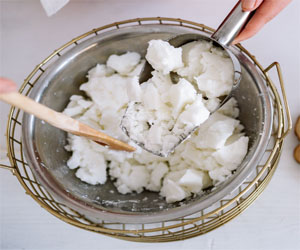 Gathering Materials
Gathering Materials
The first step in the candle making process is to gather all the necessary materials and tools. This typically includes wax (common options are paraffin, soy, or beeswax), a double boiler or microwave for melting the wax, a thermometer, wicks, fragrance oils, and candle dyes if you want to add color. It's essential to ensure that your workspace is clean and well-ventilated for safety.
Melting The Wax
Once you have all your materials ready, it's time to melt the wax. This can be done by using a double boiler or a microwave. If using a double boiler, place the wax in the top pot and heat it gently until it becomes a liquid. If using a microwave, cut the wax into smaller pieces, place it in a microwave-safe container, and heat it in short bursts until it's fully melted. It's crucial to monitor the temperature of the wax using a thermometer to prevent overheating, which can be dangerous.
Adding Fragrance And Color
If you want to create scented and colored candles, this is the stage to do so. Add fragrance oils to the melted wax and stir thoroughly to ensure an even distribution of the scent. Similarly, add candle dye to achieve your desired color. The amount of fragrance and dye you use will depend on the type and brand, so consult the instructions provided with your supplies.
Preparing The Wick
While the wax is still liquid, it's time to prepare the wick. Cut the wick to the desired length, making sure it's a couple of inches taller than your chosen container or mold. Secure the wick in the center of the container or mold using a wick holder or adhesive. Ensure the wick remains straight and centered as the wax cools and solidifies.